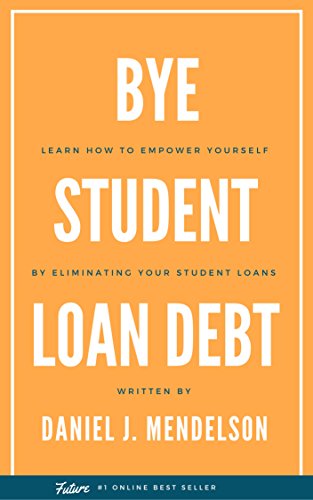Refinance Student Loans Help
BYE Student Loan Debt: Learn How to Empower Yourself by Eliminating Your Student Loans
Question: Is it smart to refinance your student loans?
Answer: You should consider refinancing student loans if you find a lower interest rate and you want to merge some or all of your student loan payments into one. While refinancing is a good idea in many cases, it’s not best for everyone, especially those who need to take advantage of federal student loan protections.
Now, nearly 70% of college graduates exited school with student debt – equivalent to 43 million student loan borrowers. Together, these students carry over $1.4 trillion dollars in loans, which continues to grow at a rate of about $3,000 per second! The average 2017 graduate will leave school with over $37,000 in debt and an average payment of over $350 a month.
BYE Student Loan Debt was created to tackle this epidemic. He has accumulated nearly $150,000 in student loan debt through a combined several years of secondary education. By sticking to the principles outlined in this book, they eliminated this debt in just 5 years! This provided the inspiration to share their story so that others could follow the same steps they used to rapidly eliminate their debt. This interactive online book is linked to online calculator tools that when paired with the simple process outlined in the book, allow for a customized repayment solution.
If you or someone you know is saddled or soon to be saddled with this burden, BYE Student Loan Debt is the book for you. For those that are already in student loan debt, this book will show you the fundamentals of how to understand, manage and eventually eradicate your debt. For those yet to take out loans, the book will highlight the principles required to minimize your debt burden and prevent a lifetime of student loan payments. Within these chapters, you will learn to:
1. Organize your loan situation and set realistic goals
2. Create a budget and make a plan
3. Bargain hunt for favorable loan consolidation terms
4. Execute a loan plan by prioritizing the most costly loans first
5. Employ programs to alter, delay, or have loans completely forgiven
6. Save and invest for your future
7. Prevent student loan debt from the beginning of your education
8. Customize a loan repayment plan with interactive online calculators
Bye Student Loan Debt lays out a clear and easy method for how to pay back student loans that I have not seen anywhere else. If you don’t fully understand your student loans or already have a purposeful strategy for repayment, then reading this book will likely save you thousands of dollars and put you in a better lifelong financial position.
This guide goes further than just explaining the student loans and tackling repayment strategies, and even talks about the difference between retirement accounts such as a 401k, IRA, Roth IRA, etc. In that sense, it’s almost like a beginners guide to personal finance which would benefit everyone. This guide is concise and easy to read. I would recommend this book to anyone who has student loans, or any parents of kids with student loans. It is an excellent information.
It is a methodical, concise, and accessible resource in a sea of unqualified advice and opinions on the subject. How to deal with student debt properly is not immediately obvious and difficult to execute – this book acts as a play-by-play for success not only in relieving debt, but in how the process fits in your own larger financial health. This guidek should be a go-to for anyone who is confused or overwhelmed by student debt.
Refinance Student Loans Details
Refinance Student Loans External Link:
